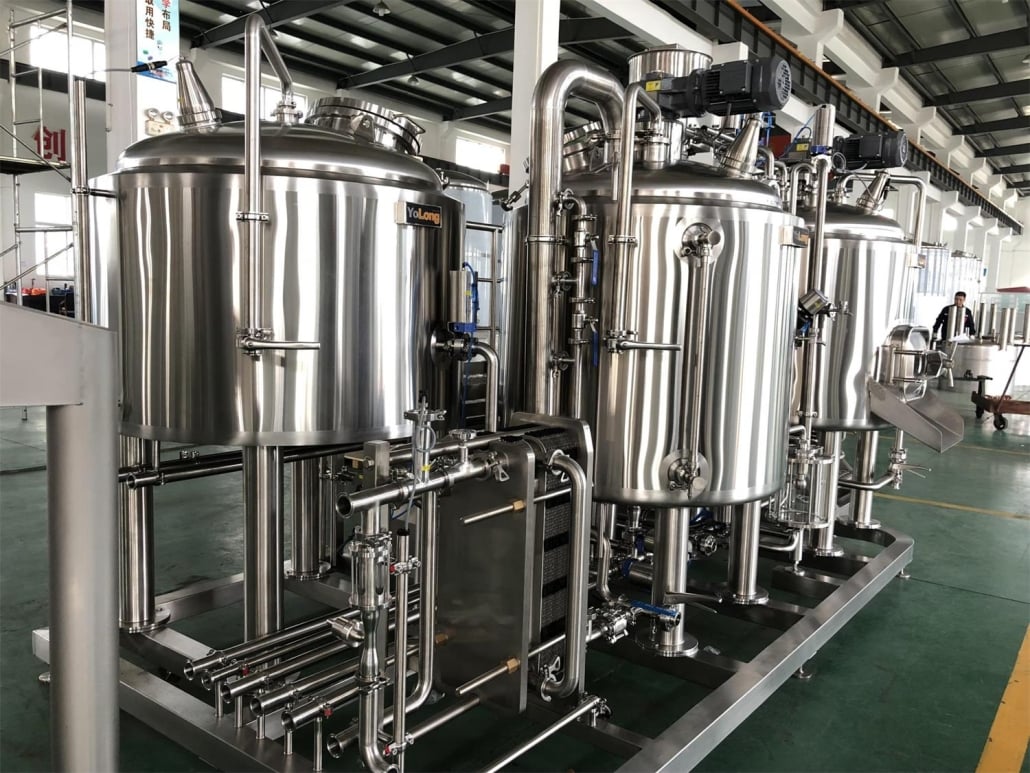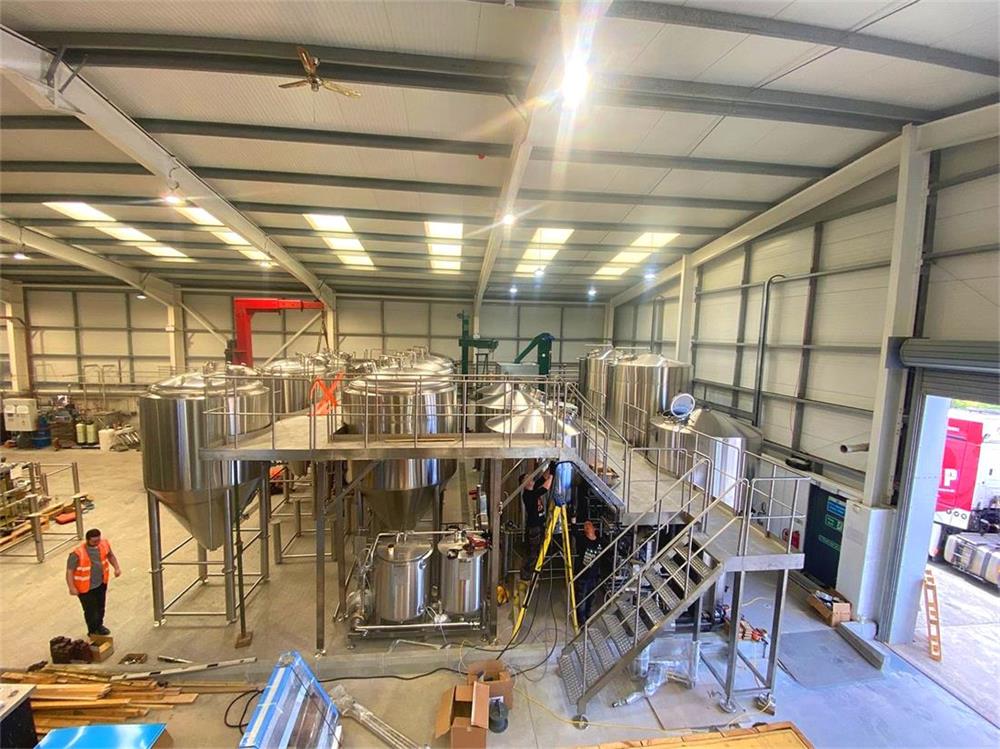Know More Brewpub Equipment
Overview of Brewpub Equipment
Opening a brewpub is an exciting venture, combining the art of brewing with the hospitality of running a pub. To ensure your brewpub is a success, it’s crucial to invest in the right equipment. This guide provides an in-depth look at the essential brewpub equipment, covering everything from brewing systems to maintenance needs. We’ll explore the brewing process, types of equipment, capacity considerations, and supplier options, all designed to help you make informed decisions.
Essential Equipment for a Brewpub
Starting a brewpub involves several key pieces of equipment. Each item plays a specific role in the brewing process, ensuring you produce high-quality beer efficiently. Here’s a detailed look at the equipment you’ll need:
Brewing System
The heart of any brewpub is its brewing system, which includes the following components:
- Mash Tun: Where the mashing process occurs, converting starches into fermentable sugars.
- Lauter Tun: Separates the wort from the grain husks.
- Brew Kettle: Where the wort is boiled and hops are added.
- Fermenter: Vessels where wort is fermented into beer.
- Brite Tank: Used for carbonation and storing the finished beer before packaging.
Supporting Equipment
In addition to the brewing system, you’ll need:
- Grain Mill: Crushes grains to the appropriate consistency for brewing.
- Heat Exchanger: Cools the wort before fermentation.
- Pumps and Hoses: Essential for transferring liquids between tanks.
- Cleaning and Sanitization Equipment: Ensures all brewing equipment is clean and sanitary.
- Kegging and Bottling Equipment: For packaging the beer.

Types of Brewing Equipment
Below is a table detailing the types of brewing equipment you might consider:
| Equipment Type | Description | Key Features | Use Case |
|---|---|---|---|
| Mash Tun | Vessel for mashing grains | Insulated, agitator, temperature control | Start of brewing process |
| Lauter Tun | Separates wort from grain | False bottom, sparging arms | After mashing |
| Brew Kettle | Boils wort and adds hops | High heat tolerance, whirlpool feature | Middle of brewing process |
| Fermenter | Ferments wort into beer | Temperature control, pressure-rated | Primary fermentation vessel |
| Brite Tank | Carbonates and stores finished beer | Pressure-rated, cooling jacket | Final storage before packaging |
| Grain Mill | Crushes grains | Adjustable rollers, hopper | Pre-brewing preparation |
| Heat Exchanger | Cools wort | Plate or tube design, efficient heat transfer | After boiling before fermentation |
| Pumps and Hoses | Transfers liquids | Sanitary design, durable materials | Throughout brewing process |
| Cleaning Equipment | Cleans brewing equipment | CIP (clean-in-place) systems, sanitizers | Post-brewing maintenance |
| Kegging/Bottling | Packages the beer | Keg washers, bottling lines, fillers | Final step before distribution |
The Brewing Process
Understanding the brewing process is essential to selecting the right equipment. Here’s a detailed walkthrough of the steps involved:
Mashing
Mashing is the first step, where crushed grains are mixed with hot water in the mash tun. This process converts the starches in the grains into fermentable sugars.
Lautering
Next, the mash is transferred to the lauter tun, where the liquid wort is separated from the spent grains. This is achieved through a process of sparging, where hot water is sprayed over the grains to extract as much sugar as possible.
Boiling
The wort is then moved to the brew kettle and boiled. Hops are added at various stages of the boil to impart bitterness, flavor, and aroma to the beer.
Cooling
After boiling, the wort needs to be cooled quickly to a temperature suitable for fermentation. This is done using a heat exchanger, which rapidly brings the wort down to the desired temperature.
Fermentation
The cooled wort is transferred to a fermenter, where yeast is added. Fermentation typically takes several days to weeks, depending on the beer style and desired flavor profile.
Conditioning and Carbonation
Once fermentation is complete, the beer is conditioned and carbonated in brite tanks. This step allows the flavors to mature and the beer to reach the desired level of carbonation.
Packaging
Finally, the beer is packaged in kegs, bottles, or cans using kegging and bottling equipment. Proper packaging is crucial to maintain the quality and freshness of the beer.
Capacity, Space, Design, Layout, and Customization
The size and layout of your brewpub will influence the type and amount of equipment you need. Here’s a table to help you consider these factors:
| Factor | Considerations |
|---|---|
| Capacity | Determine your production needs (e.g., barrels per week) |
| Space | Measure available space for equipment and workflow |
| Design | Plan for efficient flow and accessibility of equipment |
| Layout | Optimize for safety, ease of use, and regulatory compliance |
| Customization | Tailor equipment to your specific brewing style and needs |
Suppliers and Price Range
Choosing the right supplier is crucial. Here are some factors to consider along with a general price range:
| Supplier | Price Range | Specialties |
|---|---|---|
| ABC Brewing Supplies | $10,000 – $50,000 | Custom systems, installation |
| XYZ BrewTech | $20,000 – $70,000 | Turnkey solutions, support |
| BrewMaster Equipment | $15,000 – $60,000 | High-quality components, training |
Installation, Operation, and Maintenance
Proper installation and maintenance are essential to ensure the longevity and efficiency of your brewpub equipment:
| Aspect | Details |
|---|---|
| Installation | Hire professionals to install and calibrate equipment |
| Operation | Train staff on proper use and safety protocols |
| Maintenance | Regular cleaning, scheduled servicing, and prompt repairs |
Choosing a Supplier
Selecting the right supplier involves considering various factors:
| Criteria | Details |
|---|---|
| Reputation | Look for reviews and testimonials |
| Support | Evaluate the level of customer support and after-sales service |
| Customization | Ensure the supplier can tailor equipment to your specific needs |
| Warranty | Check warranty terms and conditions |
| Cost | Balance cost with quality and support |
Advantages and Disadvantages of Brewpub Equipment
Making informed decisions involves weighing the pros and cons:
| Aspect | Advantages | Disadvantages |
|---|---|---|
| Custom Systems | Tailored to specific needs, better control over brewing process | Higher cost, longer lead time |
| Standard Systems | Lower cost, faster setup | Less flexibility, may not meet all needs |
| High-Tech Equipment | Improved efficiency, advanced features | Higher upfront investment, potential complexity in operation |
| Basic Equipment | Lower cost, simpler operation | May lack advanced features, potential for lower efficiency |

FAQ
| Question | Answer |
|---|---|
| What is the most essential piece of brewpub equipment? | The brewing system (including mash tun, lauter tun, brew kettle, fermenter, and brite tank) is the heart of any brewpub. |
| How much space do I need for a brewpub? | It depends on your production capacity, but generally, a small brewpub requires at least 1,000 square feet. |
| How often should brewing equipment be cleaned? | Cleaning should be done after every brew, with thorough maintenance and sanitization on a regular schedule. |
| What is the average cost of setting up a brewpub? | Costs can range from $100,000 to over $1,000,000, depending on the size and complexity of the operation. |
| Can I customize my brewing equipment? | Yes, many suppliers offer customization options to meet specific brewing needs and preferences. |
Conclusion
Setting up a brewpub requires careful planning and investment in the right equipment. By understanding the brewing process, selecting appropriate equipment, and maintaining it properly, you can create a successful and efficient brewpub operation. Whether you’re a novice brewer or an experienced professional, this guide provides the essential information needed to make informed decisions and ensure your brewpub thrives.
Share this entry
Interested in learning more about Brewing Systems including additional details and pricing information? Please use the form below to contact us!
YOLONG BREWERY EQUIPMENT FAQS
- Commercial Brewery / Craft Brewery / Microbrewery / Nanobrewery
- What is The Difference Between Craft Beer and Industrial Beer?
- The Bespoke Differences In Custom Brewing Systems
- Everything You Need to Know About Kettle Souring
- How to Choose Brewing Equipment for Your business?
- How To Choose The-Best Partner To Build Your Commercial Microbrewing System?
- Two Detection Sensors That You Need To Use In Your Brewhouse System
- Remote Control Applications in Brewing Equipment/How does it work?
- How To Clean Your Brand New Brewery Tanks?

